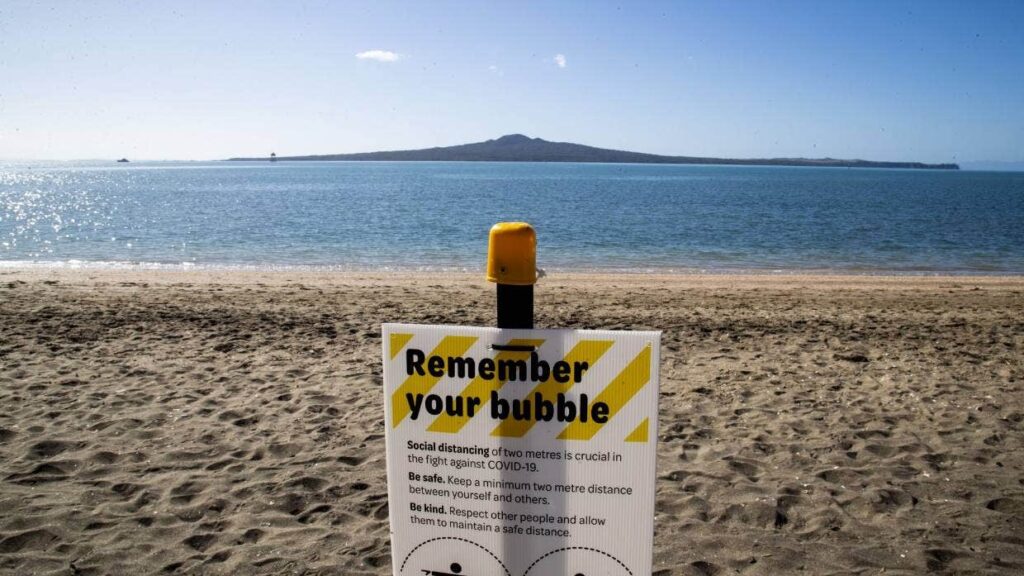The Government spent nearly $21 million on Covid-19 advertising as of June 30, a cost marketers say was money well spent.
Responding to an Official Information Act (OIA) request, the Department of the Prime Minister and Cabinet (DPMC), in August said it ran two coronavirus advertising campaigns “Unite Against Covid-19” and “Unite for the Recovery”.
The creative element of the campaigns, which covered strategy, brand design, commissioning, creative design, development and layout, cost $2.5m, it said.
The advertising cost, which included ads on TV, radio, newspapers (print and online), social media, bus stops and billboards, was $18.3m as at June 30, it said. It did not name the company behind the campaign.
The Unite for the Recovery campaign ran for about a month, starting when New Zealand moved to alert level 1 in early June and being put on hold following a resurgence of Covid-19 in early August.
At that point the Government switched back to its Unite Against Covid-19 campaign.

The OIA response, signed off by the All of Government Covid-19 Response Group chief executive Jon Ombler, said the advertising costs of the campaigns were dedicated to communicating to the public the required information needed as New Zealand responded to the pandemic.
“The spend formed a coordinated approach to ensuring every New Zealander knew what was required of them as we moved through the alert levels.”
Ben Goodale, marketing industry stalwart and chief executive of ad agency Quantum Jump, said the campaign’s price tag was reasonable given that it was produced “at breakneck pace in an evolving situation”, combined with the fact it was charged with helping save the country from the worst of the pandemic.
“It would have been a nightmare to budget properly and I’m sure there were lots and lots of changes, tweaks and developments,” Goodale said.
The design aspects of the campaign, with the consistent use of yellow, had worked well, he said.
“It won’t win any creative awards but that wasn’t the point.”
Over time other narrative styles could have been developed, as not everyone processed information the same way, he said.
“The use of more storytelling film would have freshened it up.”
Overall it was a great campaign which worked well across different media platforms and worked particularly well in outdoor advertising, he said.
University of Auckland marketing associate professor Mike Lee said for social marketing, such as the Covid-19 campaigns, where authorities were looking to change behaviour, it was important to have consistent messaging over a sustained period in order for it to sink in.
“Particularly when it’s behaviour that’s quite new and different,” Lee said.
The cost of people not receiving important information relating to Covid-19 was far greater than the cost of the advertising, he said.
Distinctive sound effects at the start of ads and yellow branding meant New Zealanders were now conditioned to know what a Covid-19 announcement sounded like, he said.
The campaign had been a success in that regard, he said.
“It’s kind of got the whole futuristic utopian sound to it. It’s not too threatening. It’s quite calming.”
Because people knew what a Covid-19 announcement looked and sounded like, it would be important to keep branding consistent in the future, he said.
However, the campaign could be freshened up by addressing behavioural issues, such as complacency around things like QR code scanning, he said.
Marketing expert and Evolve Marketing founder Brandon Wilcox said the campaign was “remarkably effective”.
“Part of its power was that it resonated with the public,” Wilcox said.
“We don’t want to be told what to do, or be deprived of being able to do something we want to do, but we willingly adopted the concept of standing together against a common enemy.”
Those behind the campaign judged the mood of the nation perfectly and crafted a message that resonated, he said.
“For that we should take our hats off to them.”
Based on New Zealand’s success in dealing with Covid-19, compared to other countries, it was money well spent, he said.
By John Anthony.

